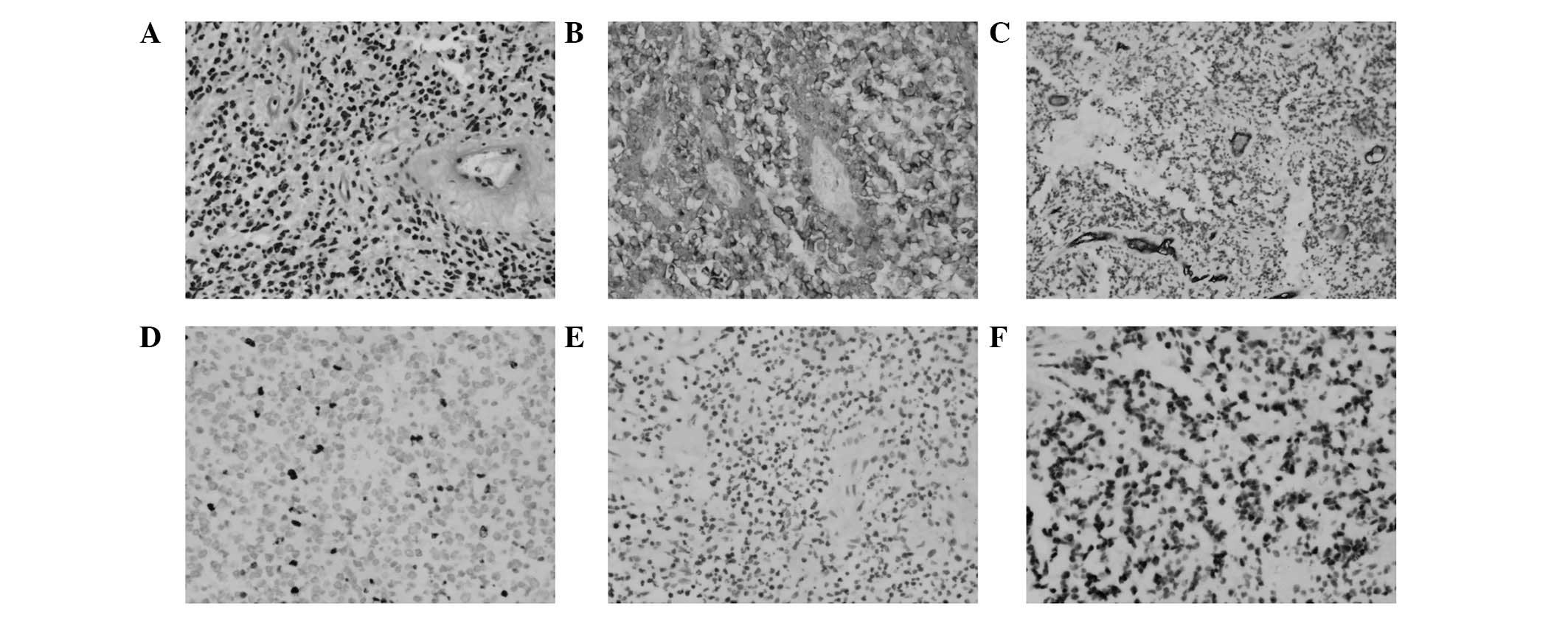|
1
|
Engelhard HH, Stelea A and Mundt A:
Oligodendroglioma and anaplastic oligodendroglioma: Clinical
features, treatment, and prognosis. Surg Neurol. 60:443–456. 2003.
View Article : Google Scholar : PubMed/NCBI
|
|
2
|
Louis DN, Ohgaki H, Wiestler OD, Cavenee
WK, Burger PC, Jouvet A, Scheithauer BW and Kleihues P: The 2007
WHO classification of tumours of the central nervous system. Acta
Neuropathol. 114:97–109. 2007. View Article : Google Scholar : PubMed/NCBI
|
|
3
|
HoangXuan K, Capelle L, Kujas M,
Taillibert S, Duffau H, Lejeune J, Polivka M, Crinière E, Marie Y,
Mokhtari K, et al: Temozolomide as initial treatment for adults
with low-grade oligodendrogliomas or oligoastrocytomas and
correlation with chromosome 1p deletions. J Clin Oncol.
22:3133–3138. 2004. View Article : Google Scholar : PubMed/NCBI
|
|
4
|
Shaw EG, Scheithauer BW, O'Fallon JR and
Davis DH: Mixed oligoastrocytomas: A survival and prognostic factor
analysis. Neurosurgery. 34:577–582. 1994. View Article : Google Scholar : PubMed/NCBI
|
|
5
|
Perry JR: Oligodendrogliomas: Clinical and
genetic correlations. Curr Opin Neurol. 14:705–710. 2001.
View Article : Google Scholar : PubMed/NCBI
|
|
6
|
Jenkinson MD, du Plessis DG, Smith TS,
Joyce KA, Warnke PC and Walker C: Histological growth patterns and
genotype in oligodendroglial tumours: Correlation with MRI
features. Brain. 129:1884–1891. 2006. View Article : Google Scholar : PubMed/NCBI
|
|
7
|
Mason WP and Cairncross JG: Invited
article: The expanding impact of molecular biology on the diagnosis
and treatment of gliomas. Neurology. 71:365–373. 2008. View Article : Google Scholar : PubMed/NCBI
|
|
8
|
Lee YY and Van Tassel P: Intracranial
oligodendrogliomas: Imaging findings in 35 untreated cases. AJR Am
J Roentgenol. 152:361–369. 1989. View Article : Google Scholar : PubMed/NCBI
|
|
9
|
Dolinskas CA and Simeone FA: CT
characteristics of intraventricular oligodendrogliomas. AJNR Am J
Neuroradiol. 8:1077–1082. 1987.PubMed/NCBI
|
|
10
|
Ginsberg LE, Fuller GN, Hashmi M, Leeds NE
and Schomer DF: The significance of lack of MR contrast enhancement
of supratentorial brain tumors in adults: Histopathological
evaluation of a series. Surg Neurol. 49:436–440. 1998. View Article : Google Scholar : PubMed/NCBI
|
|
11
|
White ML, Zhang Y, Kirby P and Ryken TC:
Can tumor contrast enhancement be used as a criterion for
differentiating tumor grades of oligodendrogliomas? AJNR Am J
Neuroradiol. 26:784–790. 2005.PubMed/NCBI
|
|
12
|
Spampinato MV, Smith JK, Kwock L, Ewend M,
Grimme JD, Camacho DL and Castillo M: Cerebral blood volume
measurements and proton MR spectroscopy in grading of
oligodendroglial tumors. AJR Am J Roentgenol. 188:204–212. 2007.
View Article : Google Scholar : PubMed/NCBI
|
|
13
|
Quon H, Hasbini A, Cougnard J, Djafari L,
Lacroix C and Abdulkarim B: Assessment of tumor angiogenesis as a
prognostic factor of survival in patients with oligodendroglioma. J
Neurooncol. 96:277–285. 2010. View Article : Google Scholar : PubMed/NCBI
|
|
14
|
McKinney JS, Steineke T, Nochlin D and
Brisman JL: De novo formation of large arteriovenous shunting and a
vascular nidus mimicking an arteriovenous malformation within an
anaplastic oligodendroglioma: Treatment with embolization and
resection. J Neurosurg. 109:1098–1102. 2008. View Article : Google Scholar : PubMed/NCBI
|
|
15
|
Gmeiner M, Sonnberger M, Wurm G and Weis
S: Glioblastoma with the appearance of arteriovenous malformation:
Pitfalls in diagnosis. Clin Neurol Neurosurg. 115:501–506. 2013.
View Article : Google Scholar : PubMed/NCBI
|











